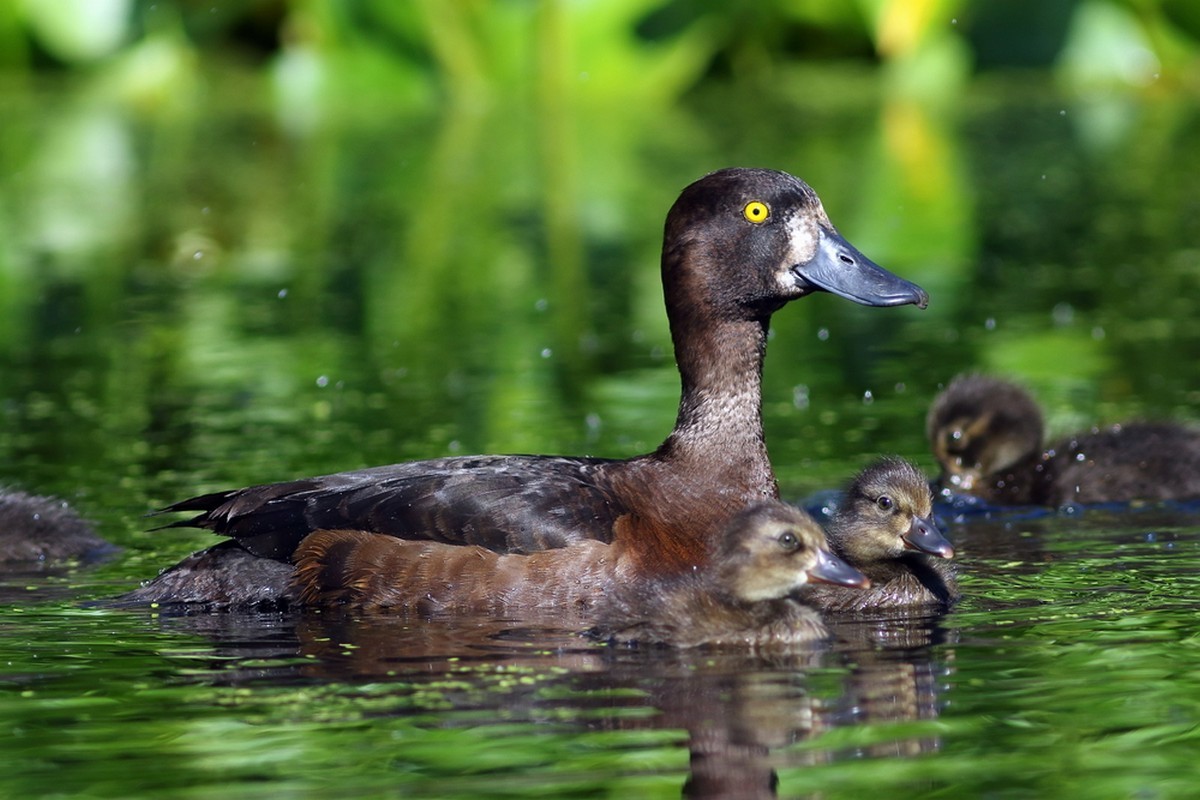10.5 Bird reproduction
Birds reproduce via internal fertilization. This means that the egg cells are fertilized inside the female.
Munasolun After the egg cell has been fertilized, the egg yolk begins forming. The yolk is the energy supply for the developing baby bird. After the yolk has developed, it gets surrounded by egg white (consisting mostly of proteins) and a hard, protective shell (constisting of calcium carbonite). Finally, the egg is ready to be laid.
The mother bird lays the eggs in a safe location and begins brooding them. During brooding, the mother lies on top of the eggs, keeping their internal temperature high. The brooding time usually takes a couple of weeks. The young birds develop inside their eggs, using the energy and substances of the egg yolk to grow.
When the young waterfowl hatch from their eggs, they are quickly ready the leave the nest. This is important, because the young birds would prove easy prey to predators if they were to stay in the nest for a long time. In water, the young birds are often safer than on land.
 The offspring of many duck species, such as those of the tufted duck (pictured), are often ready to leave the nest soon after hatching.
The offspring of many duck species, such as those of the tufted duck (pictured), are often ready to leave the nest soon after hatching.

